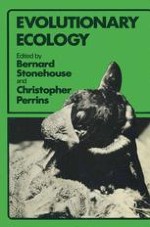1977 | OriginalPaper | Buchkapitel
Echolocation and the systematics of swiftlets
verfasst von : Lord Medway, Professor J. D. Pye
Erschienen in: Evolutionary Ecology
Verlag: Macmillan Education UK
Enthalten in: Professional Book Archive
Aktivieren Sie unsere intelligente Suche, um passende Fachinhalte oder Patente zu finden.
Wählen Sie Textabschnitte aus um mit Künstlicher Intelligenz passenden Patente zu finden. powered by
Markieren Sie Textabschnitte, um KI-gestützt weitere passende Inhalte zu finden. powered by
During his period of interest in swifts, David Lack drew attention to the importance of nesting behaviour and nest type as guides to the systematics of the Apodidae (Lack, 1956). This approach has been particularly fruitful among the Indo-Pacific assemblage known colloquially as ‘swiftlets’, recognised as a tribe Collocaliini by Brooke (1970) and as a subfamily Collocaliinae by Condon (1975). Among these swifts, in several instances, the type of nest built has proved to be critical in specific determination. Another characteristic exhibited only by the living bird that has claimed attention is the capacity of some (but not all) swiftlets to orientate in darkness by echolocation. Because the component frequencies of the click-like orientation sound fall largely within the range audible to man, it is detectable without instruments in field conditions. As a consequence, the distribution of this capacity among the swiftlets is now reasonably well known. Together with those included in this chapter, sound spectrograms have been published of the orientation clicks of six taxa, representing four species. Tests of the ability to detect and avoid obstacles in darkness have been made on three of these taxa. Data are thus available for evaluating the importance of echolocation in the ecology of these birds, and for considering its significance as a taxonomic character.
